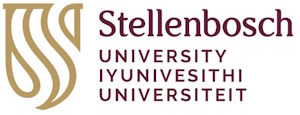
[Graduation Spotlight: Takunda Gwanzura, PhD in Electronic Engineering]
Takunda Gwanzura was only 15 years old when he dreamt of formulating a cure for cancer, one of the most prevalent diseases globally. Fast forward another 15 years to when he received the news that he is going to be awarded a PhD at the December graduation of Stellenbosch University (SU), focusing his research on opportunities in the treatment of cancer. His thesis explores the engineering of carbon nanotubes as therapeutic nanocarriers for ethnomedicinal plant extracts of southern Africa with promising anticancer properties present, targeting breast and colorectal cancer.
Cancer is characterised by uncontrolled rapid cell division and differentiation. His research focused on four ethnomedicinal plants found in southern Africa, from which 65 bioactive compounds were extracted. “With the understanding that any innovation in the cancer domain would require an integration of two or more scientific fields, I focused my studies on nanotechnology and biochemistry techniques,” he says.
Nanotechnology has provided the platform to selectively interact with cancerous cells and increase cellular uptake and drug localisation. “Functionalisation of nanoparticles can be done to recognise cancer cells and give selective drug delivery that does not interact with healthy cells,” he explains.
The result: adding nanocarriers increased the selectivity of the treatment formulation and combining the bioactive compounds from the four plants showed a synergistic effect as the final formulation was more potent. “The project aimed to develop a single-walled carbon nanotube (SWCNT) nanocarrier bio-conjugated with plant-based bioactive compounds, which can specifically target cancer cells.”
Takunda, originally from Zimbabwe, says he has positioned his career to achieve his goal ever since. “After completing my master’s degree (in Applied Science in Chemistry), I only wanted to continue with a PhD if my research was meeting a societal need. During a separate entrepreneurial endeavour, I was introduced to Prof Willie Perold (from the Department Electrical and Electronic at SU’s Engineering Faculty). I discussed the cancer topic with him, and he was convinced that this would be a game changer.”
Prof Perold supervised Takunda’s doctoral research and says he is one of the most innovative young researchers he has met. “He is a true out-of-the-box thinker. I first met him when he approached us to test a Covid-19 electrochemical sensor* that he developed in his ‘garage’. It turned out that the sensor was very effective and selective, with results available in 15 seconds. I was thus thrilled when he approached me and Prof Anna-Mart Engelbrecht from the Department of Physiological Sciences to supervise the cancer project.”
On his decision to pursue his PhD in Electrical and Electronic Engineering, Takunda says: “Engineers are essentially inventors for the future; in particular, electronic engineering still has a wide array of untapped fields that can unravel unparalleled innovation. This has been proven with the emergence of nanotechnology and its applications in the past years under electronic engineering.”
He chose SU for this journey as he visualised it as a place where innovation meets implementation. “You can have the brightest idea, but without the right institution, it will remain an idea. The support structures from supervisors and peers, the state-of-the-art facilities and readily available equipment, and the entrepreneurial drive from InnovUS (SU’s innovation company) collectively allowed me to continue my studies at the university,” he adds.
The methodology of his PhD is being patented for a UK patent application with the help of InnovUS.
*Takunda invented a diagnostic biosensor that does rapid testing for Covid-19 in one second, delivering results in 15 – 30 seconds, compared to the standard PCR test with a turnaround time of 24 hours.
Photo: Takunda Gwanzura in the laboratory, revealing the plant extract formulation.
[Article by Amber Viviers]



